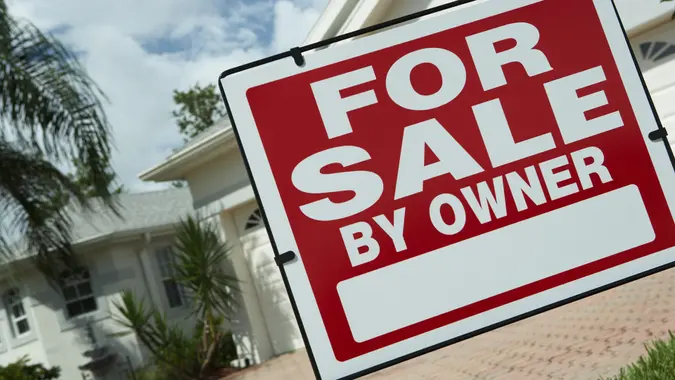What’s the Monthly Mortgage on a $250K, $500K and $1 Million House?

Commitment to Our Readers
GOBankingRates' editorial team is committed to bringing you unbiased reviews and information. We use data-driven methodologies to evaluate financial products and services - our reviews and ratings are not influenced by advertisers. You can read more about our editorial guidelines and our products and services review methodology.

20 Years
Helping You Live Richer

Reviewed
by Experts

Trusted by
Millions of Readers
Your monthly mortgage payment amount depends on several factors, and it might surprise you to know that purchase price isn’t one of them. Those factors vary from person to person, so your mortgage payment could be very different from that of another buyer paying the same price for a house.
Keep reading to learn about the factors that affect your monthly mortgage payment, and get tips for how to keep your payments affordable.
What Goes Into a Monthly Mortgage Payment?
Your home price doesn’t directly impact your monthly mortgage loan payment. Here’s what does, according to the U.S. Consumer Financial Protection Bureau:
How Much You Borrow
Your loan amount will be the purchase price of the home plus any closing costs you roll into the loan, less your down payment. So, if you’re buying a $500,000 home with a 10% down payment, and you’re paying your closing costs in cash, you’ll need a $450,000 loan to finance the purchase.
Interest Rate
The current average rate for a 30-year fixed-rate mortgage is 6.72% as of Aug. 7, per Freddie Mac. But that rate you’re offered could be higher or lower, depending on your creditworthiness, your down payment amount and other considerations.
Loan Term
Most mortgage loans are 15- or 30-year loans. Rates are higher on a 30-year loan, but payments are lower because they’re stretched out over twice as many years.
Sample Monthly Mortgage Payments for $250K, $500K and $1 Million Homes
Here’s a side-by-side look at how loan amount, mortgage rate and loan term affect your payments.
| Home Price | Down Payment | Loan Amount | 30-Year Loan (6.72%) | 15-Year Loan (5.85%) |
|---|---|---|---|---|
| $250,000 | 10% ($25,000) | $225,000 | $1,455/month | $1,880/month |
| $250,000 | 20% ($50,000) | $200,000 | $1,293/month | $1,672/month |
| $500,000 | 10% ($50,000) | $450,000 | $2,910/month | $3,761/month |
| $500,000 | 20% ($100,000) | $400,000 | $2,586/month | $3,343/month |
| $1,000,000 | 10% ($100,000) | $900,000 | $5,819/month | $7,522/month |
| $1,000,000 | 20% ($200,000) | $800,000 | $5,173/month | $6,686/month |
Other Factors Affecting Your Mortgage Payments
Some borrowers pay expenses other than loan principal and interest with their mortgage payments.
- Mortgage insurance: Borrowers who put less than 20% down typically pay mortgage insurance until they’ve built at least 80% equity.
- Escrowed items: Many mortgage loans require borrowers to make “PITI” payments — principal, interest, taxes and insurance. You pay one-twelfth of these expenses with each mortgage payment, and the lender escrows the money, then pays the bills as they come due.
Tips for Keeping Mortgage Payments Low
The following tips can save you money each month and over the life of your loan.
- Compare mortgage loans by looking at annual percentage rates (APRs) instead of interest rates. APRs represent the full annual cost of the loan, including the interest rate and origination and other lender fees.
- Improve your credit so you qualify for a better interest rate.
- Pay 20% down so you can borrow less and avoid mortgage insurance.
- Apply for homestead and other property tax rebates to reduce your tax bill, and thus your PITI payment.
- Shop around for better homeowners insurance rates.
More From GOBankingRates
- Nearly 1 in 3 Americans Hit by a Costly Holiday Scam, Norton Survey Shows -- How To Avoid This
- Here's What Retirees Wasted the Most Money On in 2025 -- and How To Avoid It in 2026
- How Middle-Class Earners Are Quietly Becoming Millionaires -- and How You Can, Too
- 6 Safe Accounts Proven to Grow Your Money Up to 13x Faster
 Written by
Written by  Edited by
Edited by 

























